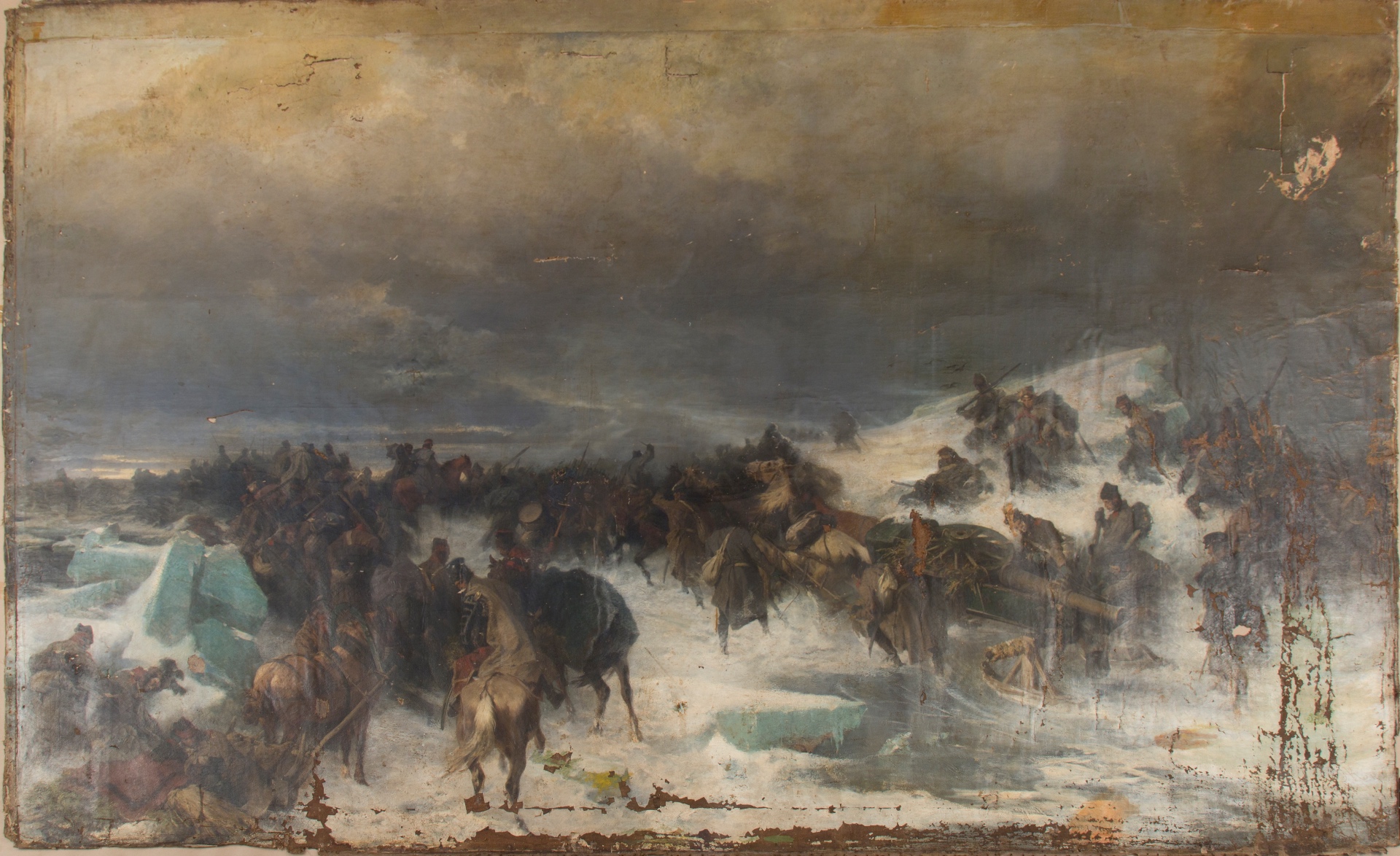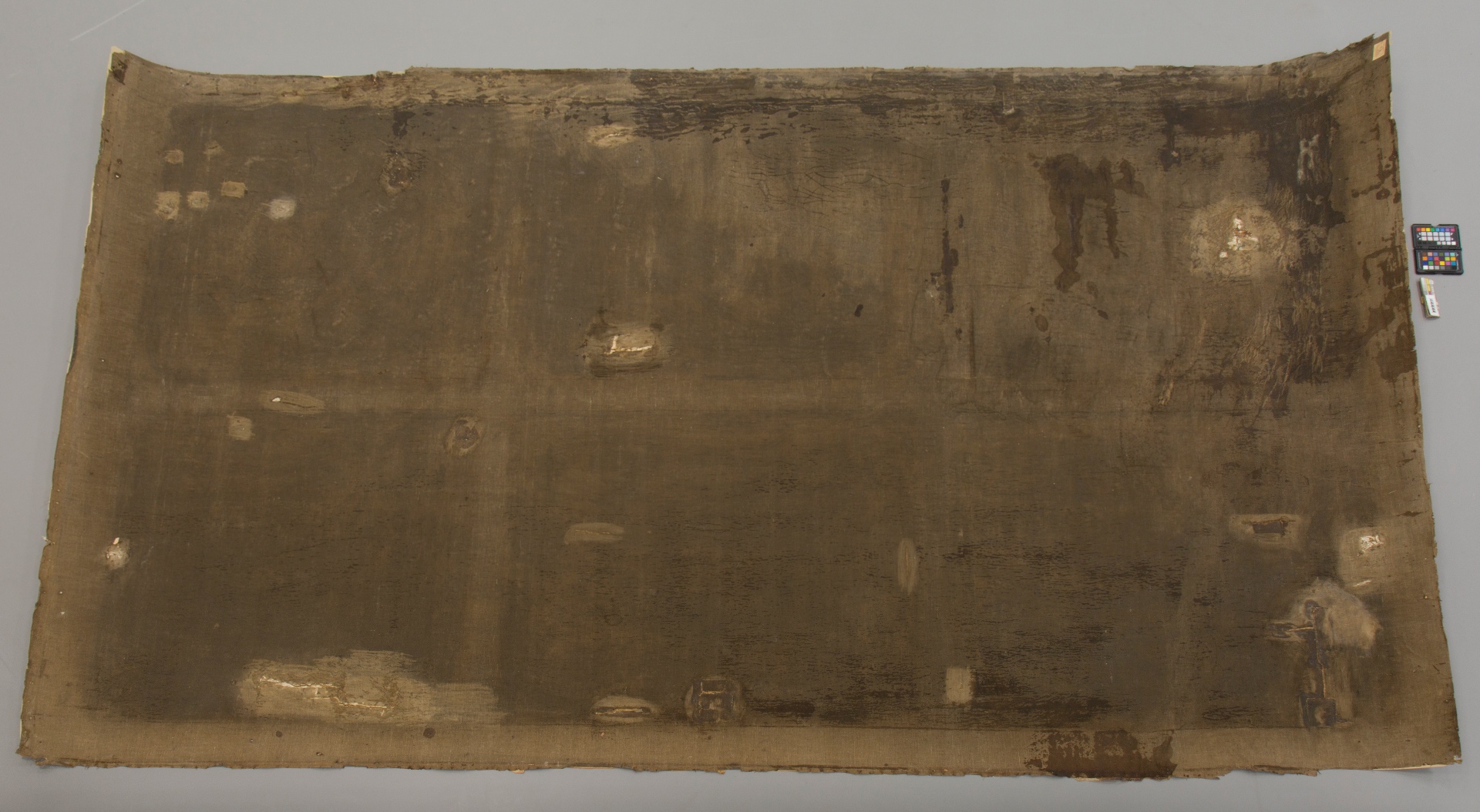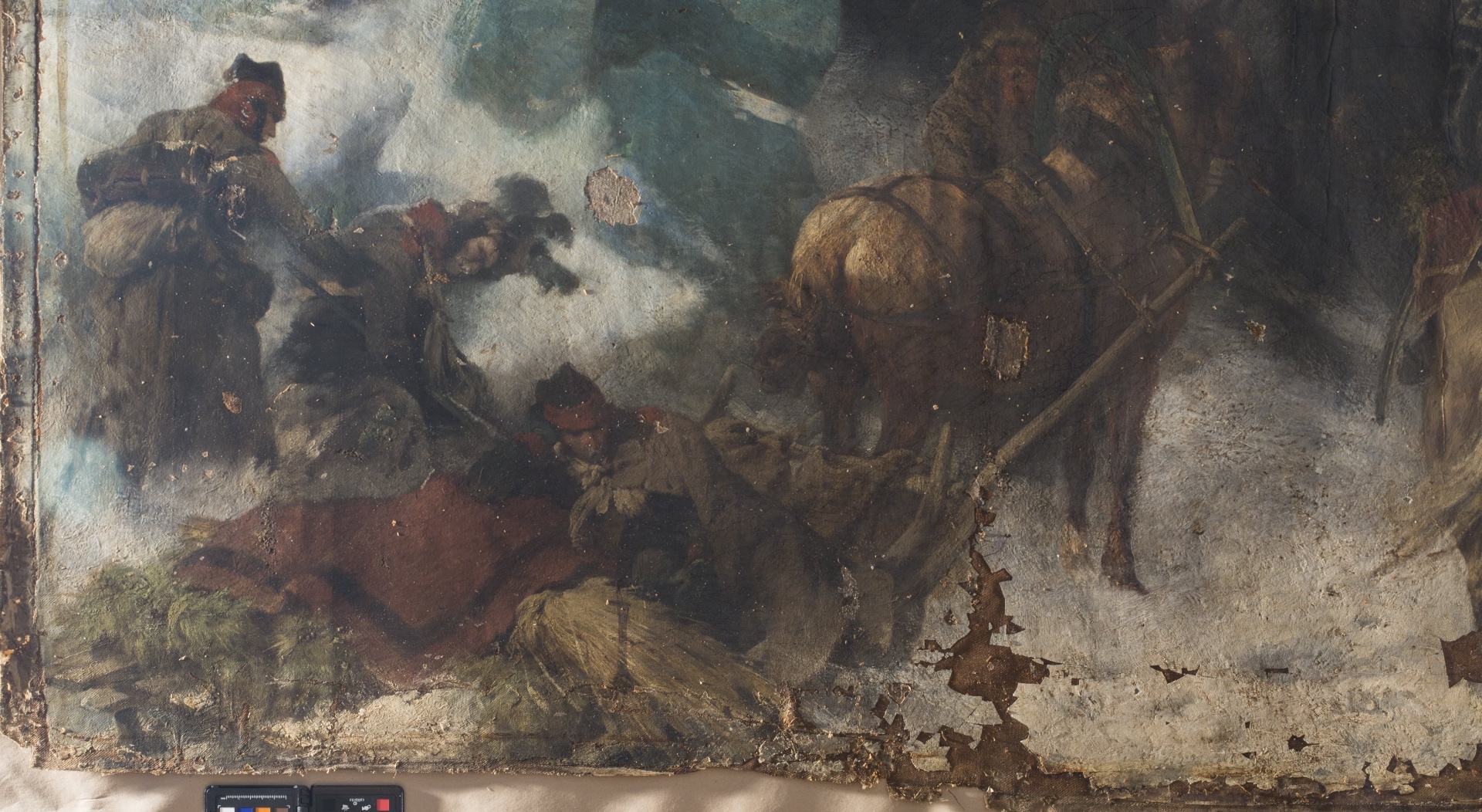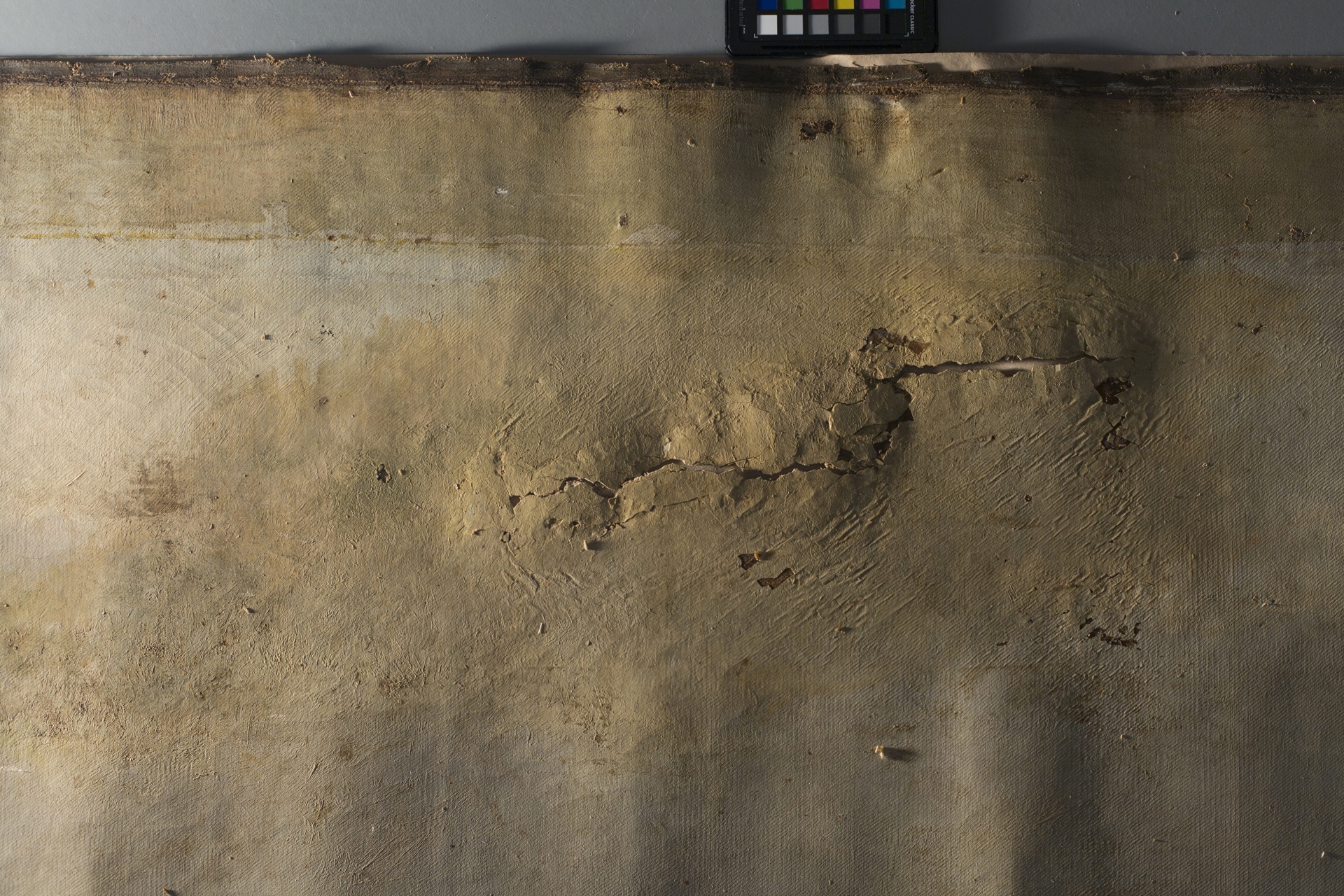Project for the restoration of Alexander von Kotzebue’s painting "Russian Forces Crossing the Gulf of Bothnia in 1809"

History of the Painting
The painting depicts one of the episodes from the Russo-Swedish War of 1808–09, when, on 1 (13) March 1801, Russian forces began to cross the ice of the Gulf of Bothnia with the aim of shifting military operations to Sweden, taking Stockholm and persuading Gustavus IV to seek peace.
This picture is the work of the celebrated Russian battle-painter Alexander Yevstafyevich Kotzebue. The Hermitage possesses the world’s largest collection of his pictures. In the 19th century this work hung in one of the Halls of Battle Paintings in the Winter Palace, but at the present time the main problem is the difficulty of exhibiting examples of this genre due to their large size. This mid-19th-century work has been inaccessible to the general viewer as until December 2022 it was wrapped around a roller. The opening of the Exchange building in 2025 will provide the opportunity to display Kotzebue’s finest battle paintings. Its full-scale restoration and subsequent display in the central hall of the Exchange would represent a significant contribution to the history of Russian art and the recreation of the imperial collection of battle paintings.
State of Preservation
The canvas is dense, stiff and strongly buckled, with deformations and creases running in various directions. The edges of the original canvas are torn with significant losses. The support has numerous tears of different shapes, with loss of some canvas in places. The sites of old tears present various losses of the primer and paint layer. On the surface of the picture, numerous broad instances of overpainting and repainting of various dates can be found, and these have darkened. The painting lies beneath layers of old varnish that have yellowed badly and form an uneven coating. There are many minor instances of the paint layer and primer flaking off around the perimeter and on separate parts of the picture. There is cleavage between the primer and the paint layer and cracking of varying character across the entire surface.
The project envisages the implementation of the following restoration measures:
Already carried out:
- Removal of the painting from the roller;
- Removal of prophylactic sealings.
To be performed:
- Drawing up of restoration documentation;
- Photographic recording of the painting at all stages of the restoration process;
- Performance of physical and chemical studies;
- Reinforcement of the paint layer across the whole surface;
- Removal of stiff deformations of the canvas;
- Closing the tears in the support;
- Preparing a backing canvas and attachment to the new canvas;
- Removal of surface soiling;
- Preparing working and restoration stretchers;
- Stretching the painting on the new stretcher;
- Application of restoration primer in areas where the paint layer has been lost;
- Regeneration of the varnish;
- Development of methods for reducing and evening out the thickness of the old varnish and for removing later overpaintings;
- Layer-by-layer reduction of the coats of varnish across the whole surface of the painting;
- Removal of old overpaintings that broadly conceal the original artist’s work;
- Application of restoration primer in areas of losses, reinforcement across the whole surface;
- Repeat regeneration of the reduced-thickness layer of varnish across the whole surface of the painting;
- Coating the painting with fresh varnish;
- Making good the losses in the original paintwork;
A working group for the restoration of the painting has been formed from the staff of the State Hermitage:
Scholarly supervisor – Yu.Yu. Gudymenko, leading researcher in the Department of the History of Russian Culture
Project co-ordinator – Ye.V. Feodorov, head of the Project Finance Sector
Project curator – V.A. Korobov, head of the Laboratory for the Scientific Restoration of Easel Paintings
Artist-Restorers from the Laboratory for the Scientific Restoration of Easel Paintings – S.N. Bogdanov, A.Yu. Krupenko and M.V. Lapshin.


